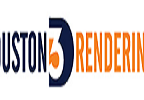How Digital Rendering Can Help You
Ever wondered how digital rendering can help you? It’s a process of converting a three-dimensional model into a two-dimensional image. This process has become a useful tool for architects, engineers, and designers to visualize and communicate their ideas to clients. In the article, the author explains how the process of rendering is often used to create detailed drawings for homes and commercial buildings. Digital rendering can help you visualize and communicate your ideas to clients. The process of rendering is often used to create detailed drawings for homes and commercial buildings. It is a process of converting a three-dimensional model into a two-dimensional image.
Many people in the design industry rely on digital rendering to help them bring their visions to life. These images allow designers to visualize what their design will look like in the end. With so many different options to choose from, it can be difficult to decide which type of rendering is best for the project. One of the most popular types of Renderings is the photorealistic rendering. This type of rendering produces images that are so close to the real thing that they can be mistaken for photographs. These images are created with a technique called ray tracing. Ray tracing simulates the way light reflects off of surfaces, which makes for very realistic looking images. For those who want a more cartoon-like rendering, there is the non-photorealistic rendering. This type of Renderings produces images that are much more stylized than photorealistic rendering. The colors are exaggerated and objects are distorted, but the renderings still convey the desired message.
A Visualization Service is a web-based service that offers a collection of data in the form of interactive visualizations. The purpose of this service is to make the data easier to understand and interpret. The information provided by the Visualization Service is accessed by viewing an interactive map or by entering data into a form. The map displays the geographic location of the data and the form displays the data in columns and rows. The map-based interface is composed of three different layers. The first layer is a map that displays geographic location of the data.
